Let's start in the idle and in the low-load range. The 15 watts are clearly at the expense of the lighting, because a total of five RGB channels, 4 of which can be addressed, take their toll. Once the load is right, there will be plenty of 215 watts in the stress test and 220 watts in gaming. I measured this value in both Witcher 32 and Metro Exodus. Easier exercises, such as WoT or CAD applications with 3D preview, still cost with a more moderate 190 to 200 watts. Overclocked, you then land at a maximum of 241 watts, then limit power limit and voltage.
By the way, the specifications for the power limits can be read out beautifully and perfectly coincide with the measurements:
GPU Voltage Gradients (VDDC)
If we now compare the voltages, then you can see very nicely how the voltage breaks down a bit with rising temperature (and of course also pulls the clock down), which affects the maximum achieved boost step.
Let's look at the high-resolution measurements of power consumption and current/voltage. You can already see the way Nvidia's Boost is regulated.
Standard compliance on the motherboard slot
Both cards are in the grass-green area when the motherboard slot is debited. Here, too, I have made a diagram: in the card with the 7 phases, the load distribution is exemplary, whereby the one phase fed from the slot will never lead to an overload, even with the torture loop.
Power supply measurement and dangerous load peaks
As I have already demonstrated in detail in my basic article "The fight of graphics card against power supply – power consumption and load peaks demystified", there are also temporarily higher loads in the millisecond range, which are unfavorable in case of unfavorable designed or improperly equipped power supplies can already lead to unexplained shutdowns. The TBP (Typical Board Power) measured by the graphics card manufacturer or the reviewers does not really help for a stable design of the system.
Peaks with intervals between 1 and 10 ms can lead to shutdowns with very fast-reacting protective circuits (OPP, OCP), especially for multi-rail power supplies, although the average power consumption is still in the norm. For this card, I would therefore calculate the normal OC with up to 300 watts as a graphics card load proportionally to the secondary-sided total power consumption of the system, in order to have enough reserves in case of a case. A short excerpt with high resolution now shows us the 20 ms measurements (10 S intervals), how I run them automatically for valuation:
KFA2 GeForce RTX 2070 SUPER Work The Frames Edition, 8GB GDDR6, HDMI, 3x DP (27ISL6MD24WF)















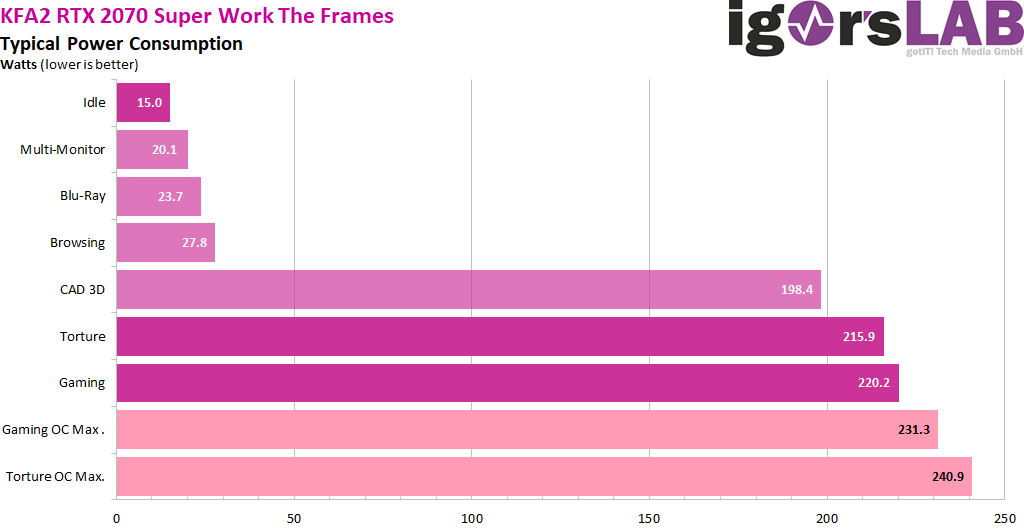
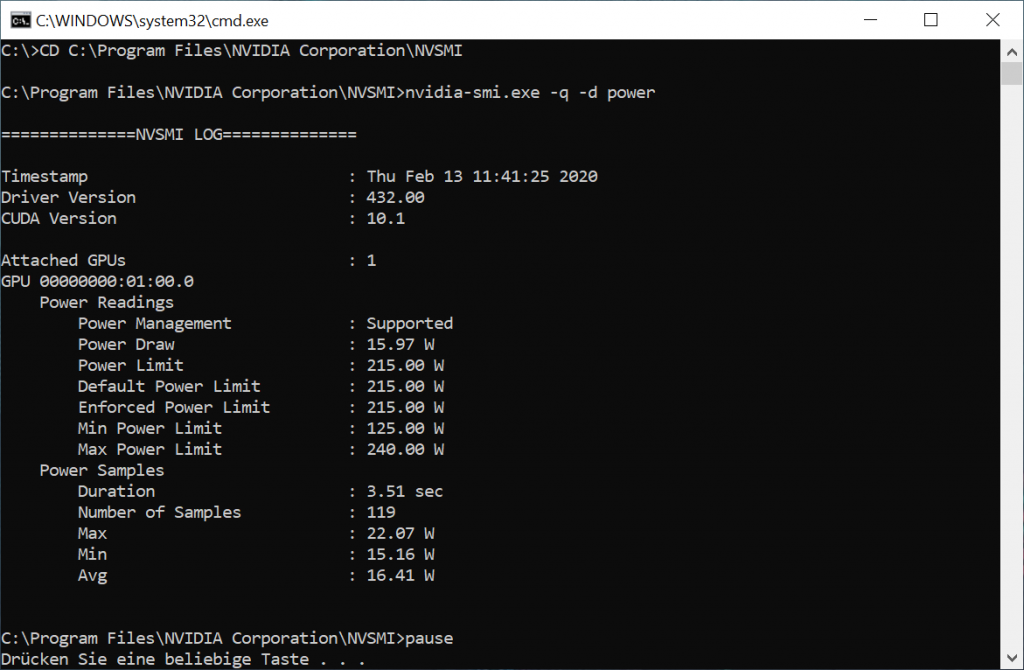
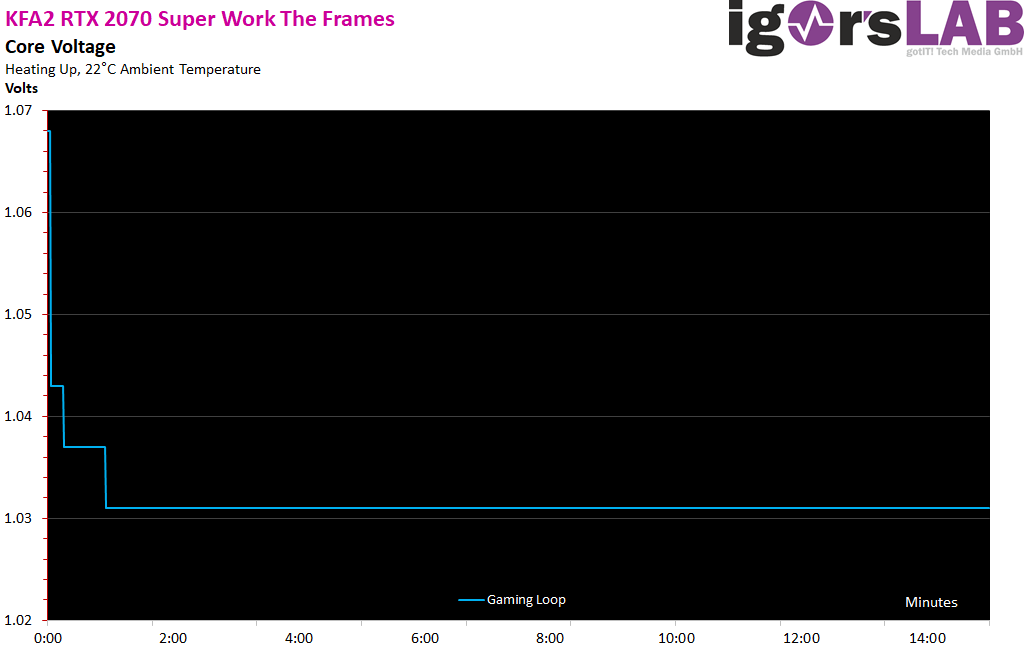
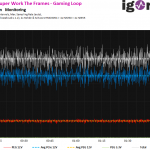
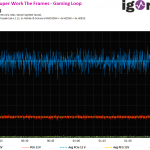
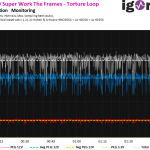
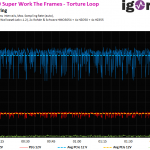
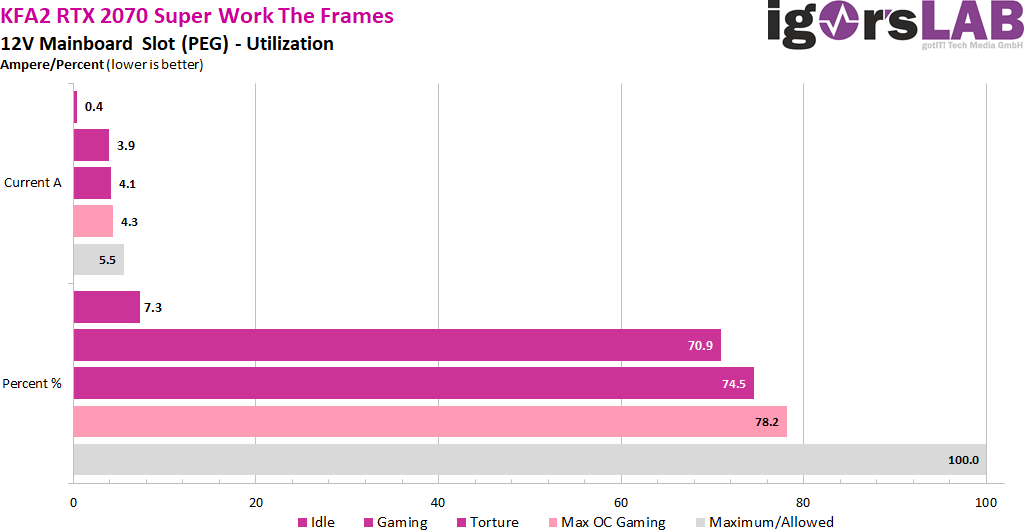
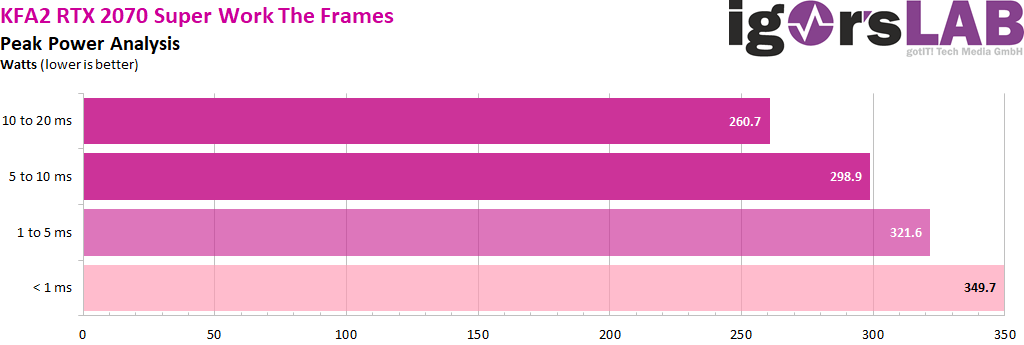
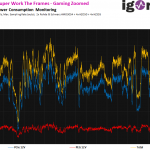
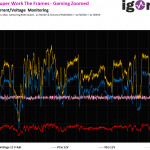
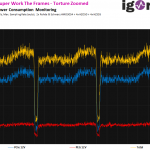
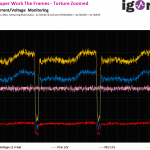
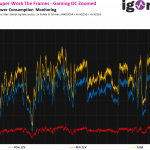
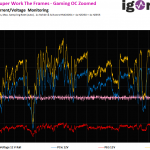
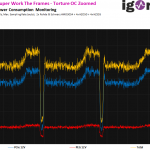
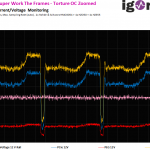


















Kommentieren